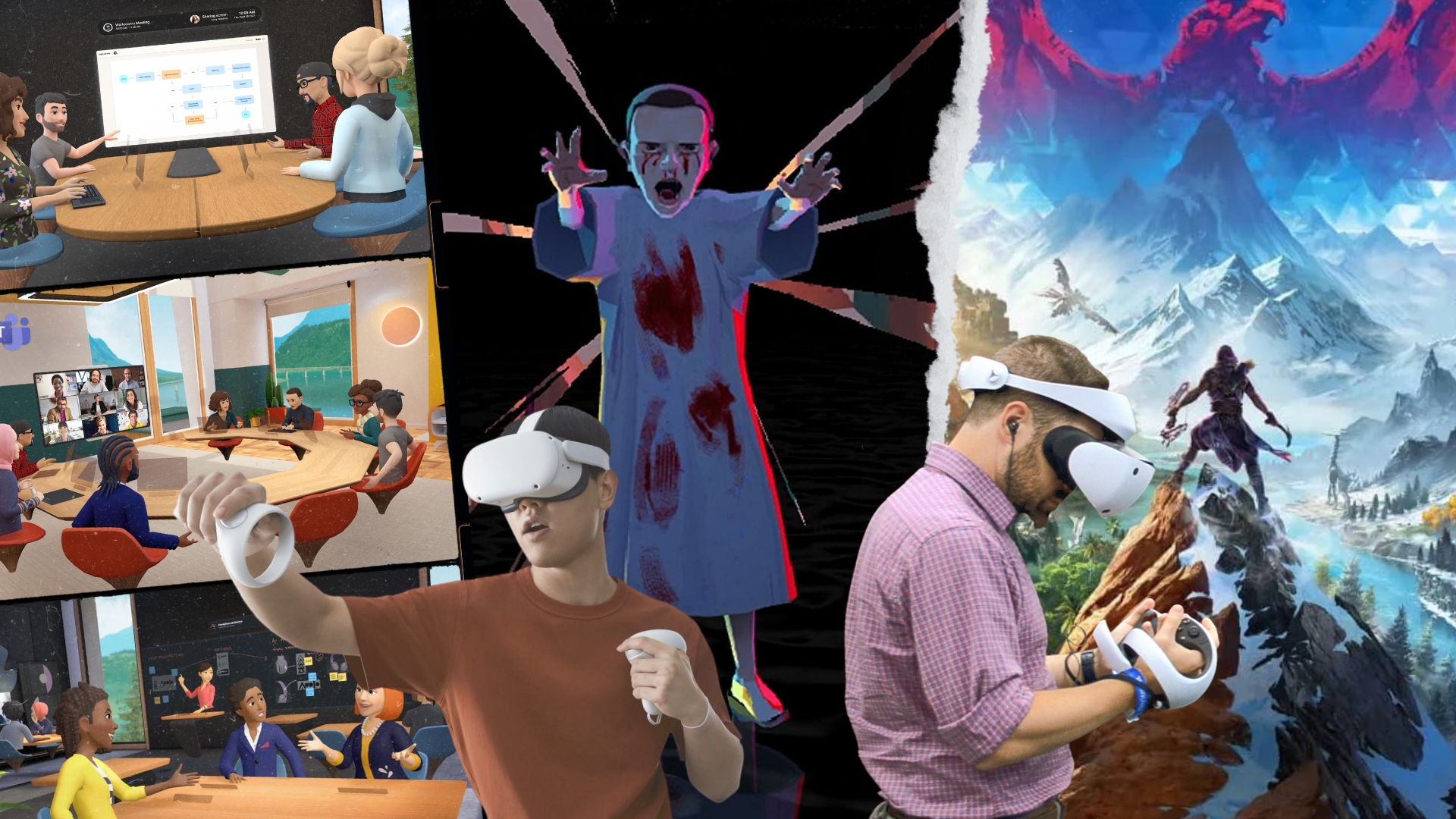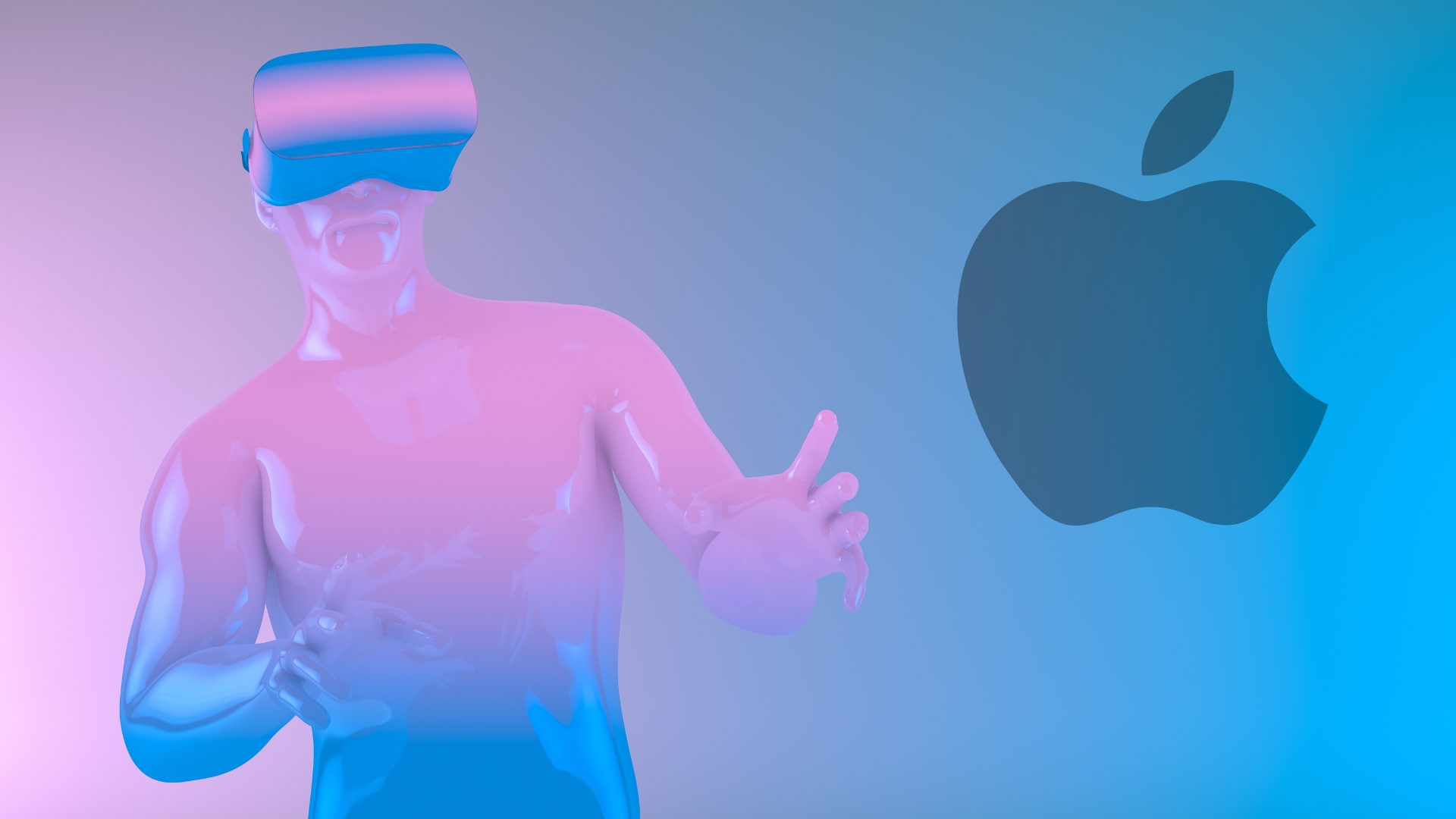Can VR make a comeback in 2023? These games and headsets give us hope
Sony, Meta and Apple gearing up for the new year

Virtual reality hasn’t seen much in the way of notable progress in the last couple of years, with none of the five best VR headsets we can currently buy having been released in the last 18 months, and only one since 2020.
But with the impending arrival of the PSVR 2, the expected release of the latest Oculus (Meta) Quest headset and the possibility of Apple’s long-rumored mixed reality headset emerging, 2023 looks like being the year VR might finally start to realize its full potential.
The PSVR 2 alone – as the only one of three headsets with a confirmed 2023 release date – would be more than enough to move the dial forward for VR based on what we know already. Although much has been made about the PSVR 2’s price, in reality it will arrive as one of the most impressively specced headsets at a price that sits on the lower end of the VR market.
To reinforce this point, when compared to 2022’s Meta Quest Pro, the PSVR 2 will launch at a third of the Pro’s price while offering a superior resolution, field of view and panel refresh rate. This is not to even mention Sony’s commitment to developing exclusive experiences for its new headset that no competitor (so far) can match.
The PSVR 2’s confirmed release aside, here’s what 2023 might have in store for VR.
Champion in waiting: PSVR 2

As impressive as the specs and features of the PSVR 2 are, there’s no escaping the hardware’s reliance upon owning a PlayStation console being a potential limitation. This was also true for the first PSVR on its debut, which didn’t lack for performance value but suffered nonetheless for a lack of opportunity.
So naturally the ultimate measure of the PSVR 2’s success will revolve around the games and experiences it will offer – particularly its exclusives. On this front, no title looks more promising for PSVR 2’s ability to drive virtual reality forward than Horizon: Call of the Mountain.
Sign up for breaking news, reviews, opinion, top tech deals, and more.
Following on from Horizon: Forbidden West as the latest entry in the popular PlayStation exclusive franchise, Sony has made no secret of the size of its bet on Horizon: Call of the Mountain’s success for the PSVR 2. As a launch title for the new headset, Call of the Mountain is being marketed heavily by Sony as part of a bundle with the PSVR sequel, and has arguably shown just enough to pique the interest of seasoned PlayStation gamers.
As good as this title looks, though, it’s slim pickings elsewhere in terms of PSVR 2 exclusives… so far. A majority of the titles currently announced as being on the way for Sony’s latest have already been released for other VR headsets, such as the Meta Quest 2, which won’t do much to encourage casual VR fans to ditch their old headsets for PlayStation’s new one.
Still, if nothing else, the premium quality of the specs on offer in the PSVR 2 at a fraction of the price of many of its competitors should (in theory) be enough to shake off the VR market’s cobwebs.
And there are hints we won’t have to wait too long after the PSVR 2’s release to find out what further progress in the world of VR looks like.
The competitor: Meta Quest 3

Although its efforts in the metaverse haven’t exactly paid off for it, there has arguably been no VR headset launch yet to have matched the popularity or success of the Oculus Quest 2 (now Meta Quest 2). And this is hardly by accident.
The Oculus Quest 2 has stood out from its release as a result of its ability to present an easy path of entry into the world of virtual reality – not requiring a heavy-duty PC setup or expensive console to run – while matching its accessibility with impressive technical specs. The headset has also benefited from the release of many of VR’s best games yet during its life cycle, such as Beat Saber (now paired as a redeemable download with Quest 2 headsets), Star Wars: Tales from the Galaxy's Edge and Resident Evil 4 VR.
That has at least allowed Meta to offset the damages from its failed metaverse product Horizon Worlds, which was recently reported to have seen a steep decline of over 100,000 users in only eight months.
What hasn’t helped Meta, however, is the disappointing launch of its pricey mixed-reality headset, the Meta Quest Pro. Despite boasting some impressive performance features overall, the Quest Pro has largely been forgotten since releasing in late October. This likely owes to the Pro’s inability to represent a good enough improvement over the Oculus Quest 2 to justify its price.
What the Pro does do is set the stage for the arrival of Meta’s Quest 3 and, if Meta CFO David Wehner is to be believed, that arrival will come sometime in late 2023 (with the Quest 4 reportedly set to follow not too long after). Rumors that the Quest 3 will adopt uOLED displays on top of anticipated improvements to the performance specs of the already-exceptional Quest 2 sees Meta’s 2023 release looking a lot like a potential game-changer for VR.
And the Meta Quest 3 could even be the game-changer for VR in 2023, provided we don’t see the long-rumored arrival of a new powerhouse competitor finally hit the market.
The great unknown: Apple’s mixed-reality headset

Still not officially confirmed but heavily rumored, Apple’s entry into the world of virtual reality is every bit as anticipated as you’d expect – even with proposed release dates having been consistently missed and shifted in the years since reports about the headset first emerged. This ultimately speaks to what a headset from Apple would represent for the VR market.
When Apple released its first iPhone in 2007, it came as nothing short of a revelation, both for smartphones and tech more generally. As renowned as Apple was as a company all those years ago, it regardless didn’t enjoy anything close to the prestige and popularity (or cult-like status as some would say) that it does now. The iPhone’s success has a lot to do with that, but so too does the consistency of Apple’s other product releases in the almost two decades since the first iPhone arrived.
With its track record of both quality and innovation, it is reasonable to expect that any virtual (and mixed) reality product from Apple might act as revolutionary for virtual reality in much the same way that the iPhone did for smartphones. And rival companies, like Google and Samsung, would probably seek to compete. Feasibly, a release of Apple’s rumored headset would ignite a virtual-reality arms race unlike any we’ve seen for the medium, with consumers ultimately reaping the benefits.
If 2023 does prove to be the year we finally see Apple’s entry into this space, it could very well also be the year we look back on from some time in the future as when virtual reality finally began to realize its true potential.
The happy bonuses
If the prospective releases of three new virtual reality headsets weren’t enough to ignite excitement about the outlook of 2023 for VR, several announced and impending software releases for the medium should seal the deal.
Big-name pop culture franchises like Attack on Titan, Stranger Things, Peaky Blinders, Ghostbusters and Jurassic Park are all coming to VR, with each hoping to match the exceptional quality (and popularity) of the likes of 2020’s Half-Life: Alyx. At the very least, each franchise’s existing popularity will draw renewed eyes and attention to virtual reality that will correspond with benefits for the medium.
And although we have seen the likes of Stranger Things on VR before (in the form of Stranger Things: The VR Experience in 2017), advancements in the capabilities of studios developing for VR in recent years make the efforts of five years ago look decades behind.
This reflects the rate of evolution for VR software having far outpaced that of hardware, but 2023 could finally be the year we see this change. Even if this ends up only being half true, any progress in virtual reality finally realizing its true potential is cause for excitement.

James is a senior journalist with the TechRadar Australia team, covering news, analysis and reviews in the worlds of tech and the web with a particular focus on smartphones, TVs and home entertainment, AR/VR, gaming and digital behaviour trends. He has worked for over six years in broadcast, digital and print journalism in Australia and also spent time as a nationally recognised academic specialising in social and digital behaviour trends. In his spare time, he can typically be found bouncing between one of a number of gaming platforms or watching anything horror.

